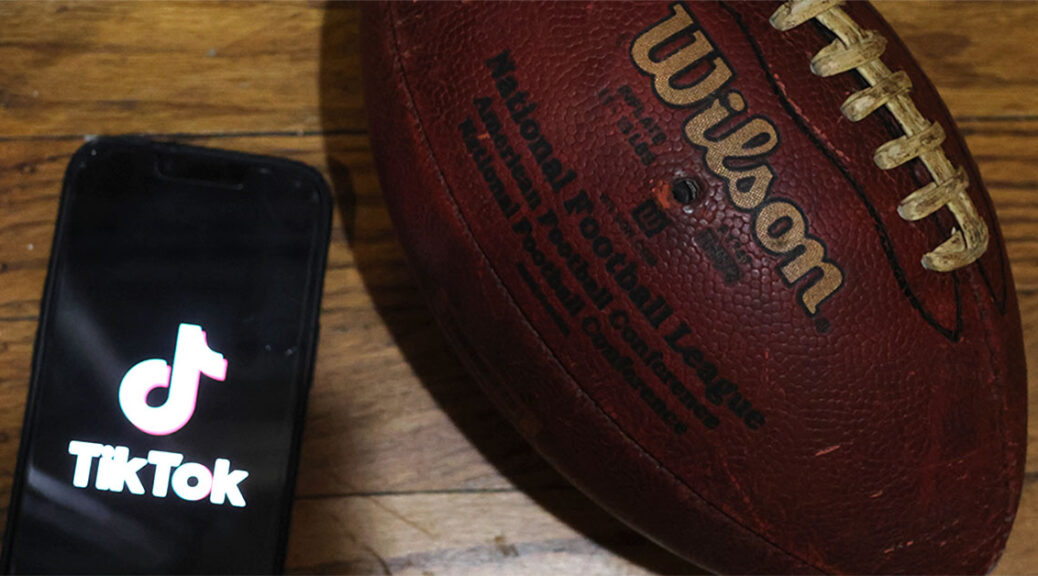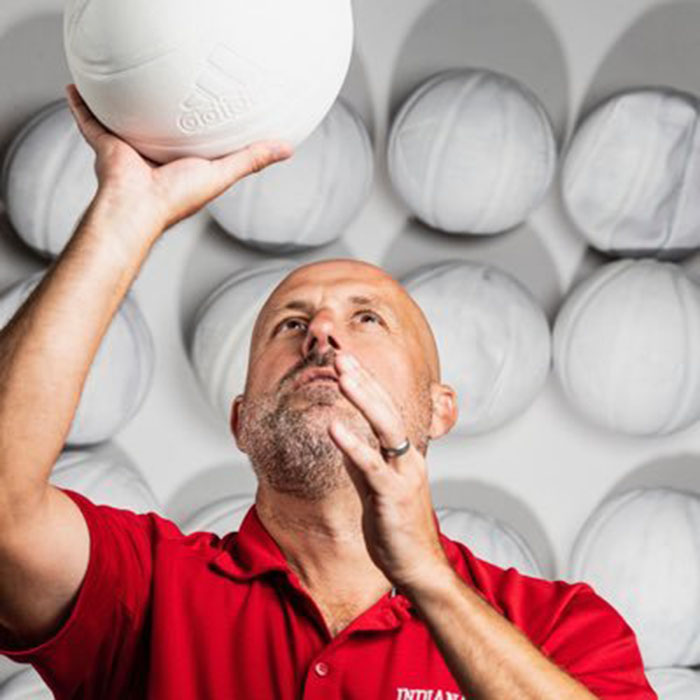
Student Athlete or Social Media Star: NIL Opportunities for Athletes
By Catherine Hattery, Ginger Jia and Brianna Rudnet
BLOOMINGTON, IN (Nov. 5, 2024)
The stadium erupted with loud cheers as the football forcefully soared to the other end of the field. Marlboro ‘Cignetti’ towels waved from the side lines to the nose bleeds. The large number of fans crammed into Memorial stadium is a stark contrast from attendance last year, as Indiana Football has had a considerably better season this fall, still undefeated well into the season.
The crowd, a sea of red, exploded as Freshman kicker Quinn Warren successfully punted the ball to the opposing team, Washington, to begin the game.
Warren’s life has changed in more ways than one since signing to IU’s football team back in February- not just in terms of athletics. Because of the Supreme Court’s ruling in 2021, declaring that the NCAA could not prohibit student athletes from benefiting from their name, image, and likeness, Warren is able to monetize his brand; establishing sponsorships, brand partnerships, and growing his social media presence.

Warren has stressed the importance of establishing his brand. “To build a personal brand is fairly important. You want to create an account that is marketable, and one that companies are willing to give a deal to and market their product through,” Warren said.
Although around 10 companies have reached out to him, Quinn has only partnered with the popular clothing brand Hollister and Max Caffeine Gum and has been compensated through the form of products and payments. “They sent me clothes and I had to post two Instagram posts, three photos, and then a reel, and made $200. It was that simple.” Warren said. He described using the app Postgame to become a Hollister Ambassador. “The app evaluates people who have applied and select a handful to market the brand through our social media platforms.” Warren said.
While the NIL ruling has provided collegiate athletes with countless opportunities like the ability to profit from brand partnerships and the many connections that social media can create, others have wondered if the ability to make a profit would affect the legitimacy of a player’s recruitment.
For Quinn, the NIL benefits were simply that- a benefit. “Although the opportunities some schools gave for NIL were intriguing, I played football at Indiana University because of the sport itself not because of the NIL aspect.”
Galen Clavio, the Associate Dean for Undergraduate Education for Indiana University’s Media School, an NIL expert, agreed. “Look at the attention on IU football. They are not selling out games because they have popular NIL players on their team. They are doing it because they have got good players that are winning games.” Dr. Clavio said.

Clavio also highlighted the Cavinder twins, popular basketball players who transferred from Fresno State to Miami University, illustrating there was no correlation between recruitment and one’s name, image, and likeness. “Maimi did not take them because of their NIL capabilities. They [the Cavinder twins] chose Miami because of the possibilities of the marketplace there.” Clavio believes that although a player may equate more NIL benefits to certain schools, like the Cavinder twins did, a school’s drive to recruit a player does not lie in their social media presence, nor their ability to market themselves- only in their talent.
Clavio continued, adding that when considering professional sports, a team would not sign a player based on their ability to market themselves, but their capability to perform. “For the most part, at the professional level, you do not see professional sports teams going and signing athletes solely because they are popular on social media.” Clavio argues that the relationship between NIL and college athletes should mirror professional sports and the profitability they get to experience in regards to the recruitment process.
Senior Associate Athletic Director for Strategic Communications, Jeremy Gray, emphasized the importance of marketing through social media. “How do you advertise to someone under the age of 25? You don’t read newspapers. You don’t watch traditional television. You don’t listen to radio.” Gray contended that college athletes are major influences among college students, citing Sydney Parish, a member of the IU Women’s Basketball team who has amassed many followers, as a major influence among students in Bloomington.

“The best way to reach that group [18 to 25-year-olds] is by paying social media influencers to market your products, businesses, restaurants, and the like. They [college athletes] are valuable to the community to market to businesses,” Gray said.
Gray illustrates the major incentive for companies and brands to create relationships among college athletes, as a majority of their followings are made up of college students who are influenced to purchase products from certain brands if prompted to. Without NIL, companies would lack the benefits college athletes provide their brands through social media, emphasizing the important role athletes play in the scope of marketing.
As Indiana University’s football team continues to win, so do the players financially. With more attention on the teams success, the players continue to reap the benefits as companies reach out for brand deals and partnerships due to their popularity. Athletes like Quinn Warren emphasized the role of NIL in his college career so far. “NIL has changed my view of playing college football. I have gained so much from simply being a college athlete because of the courts ruling in 2021.”
On Friday Oct. 18. both students, staff, and residents of Bloomington were interviewed about their thoughts on the growing opportunities provided to athletes through NIL. Those interviewed believed NIL granted college athletes numerous opportunities to market themselves through brand deals and partnerships, providing them the ability to profit through their name, image, and likeness.
###

